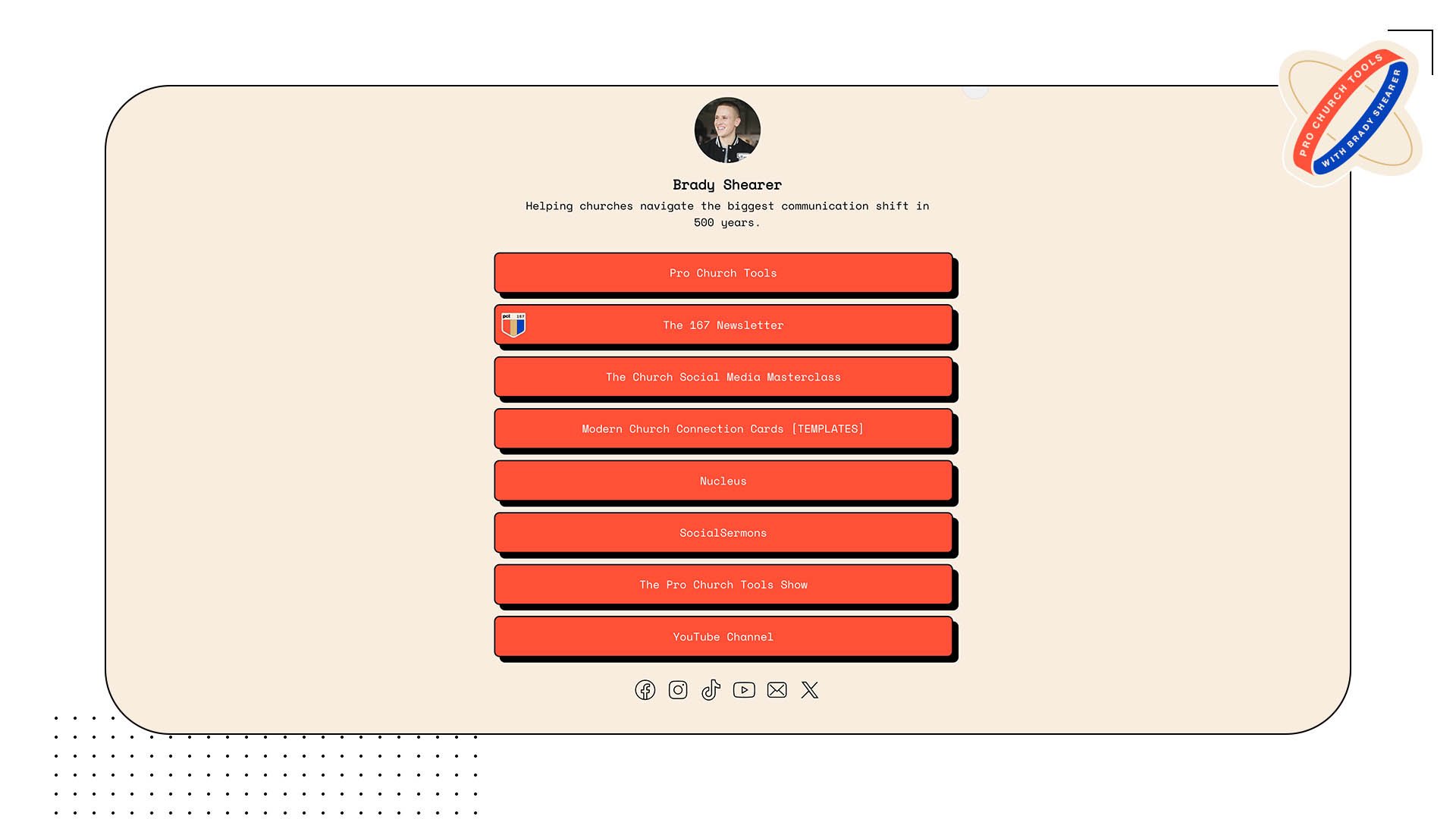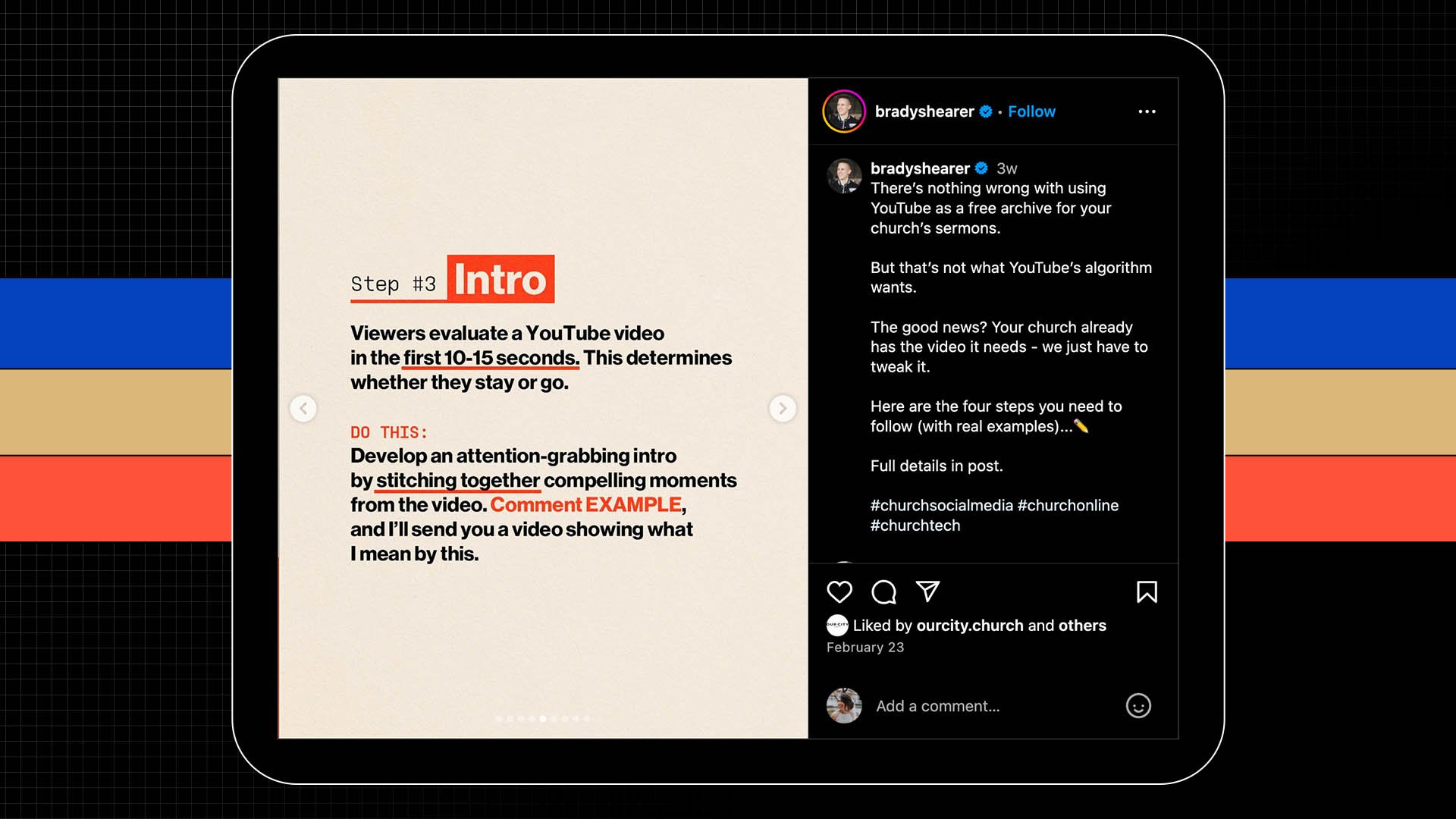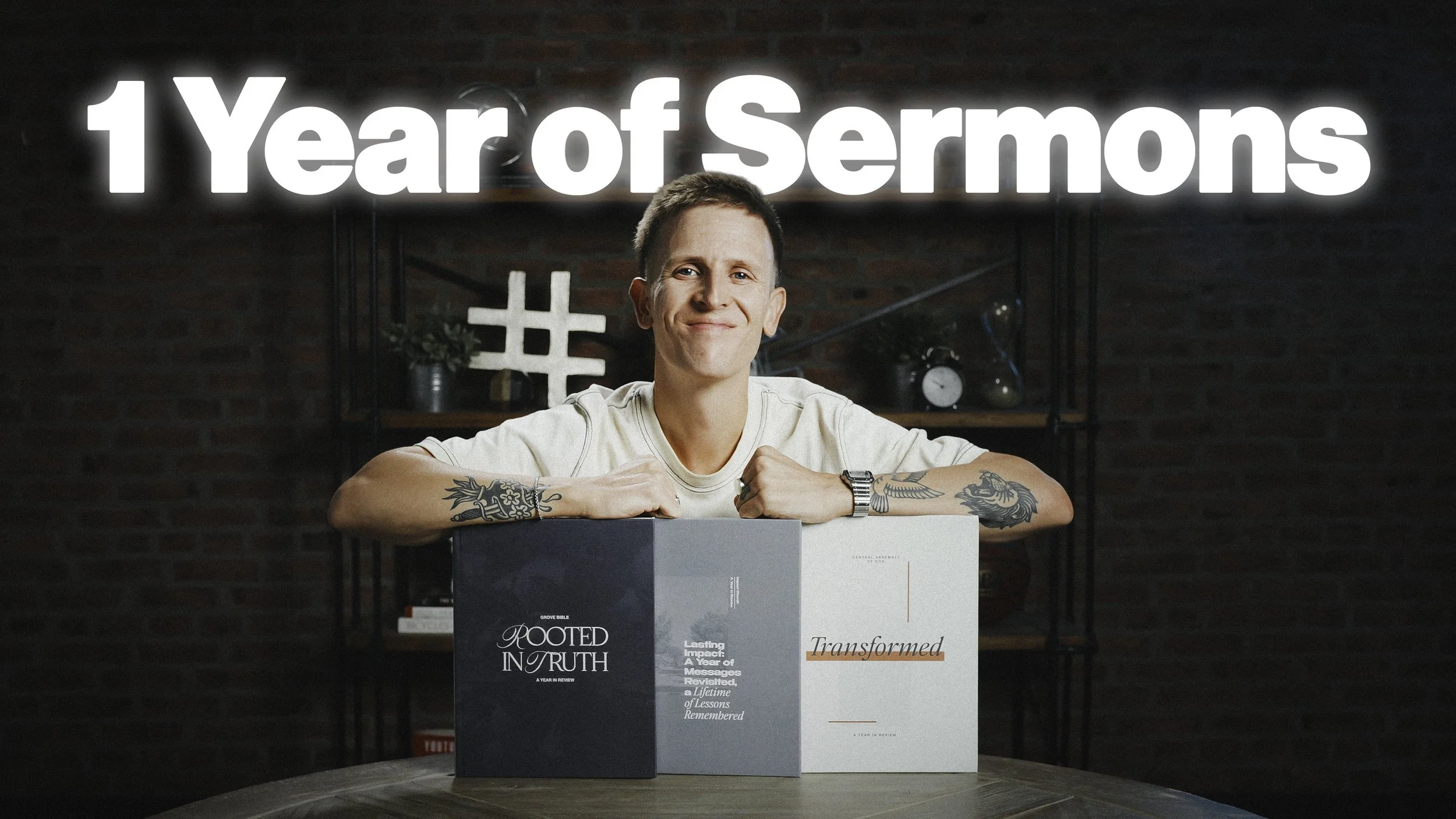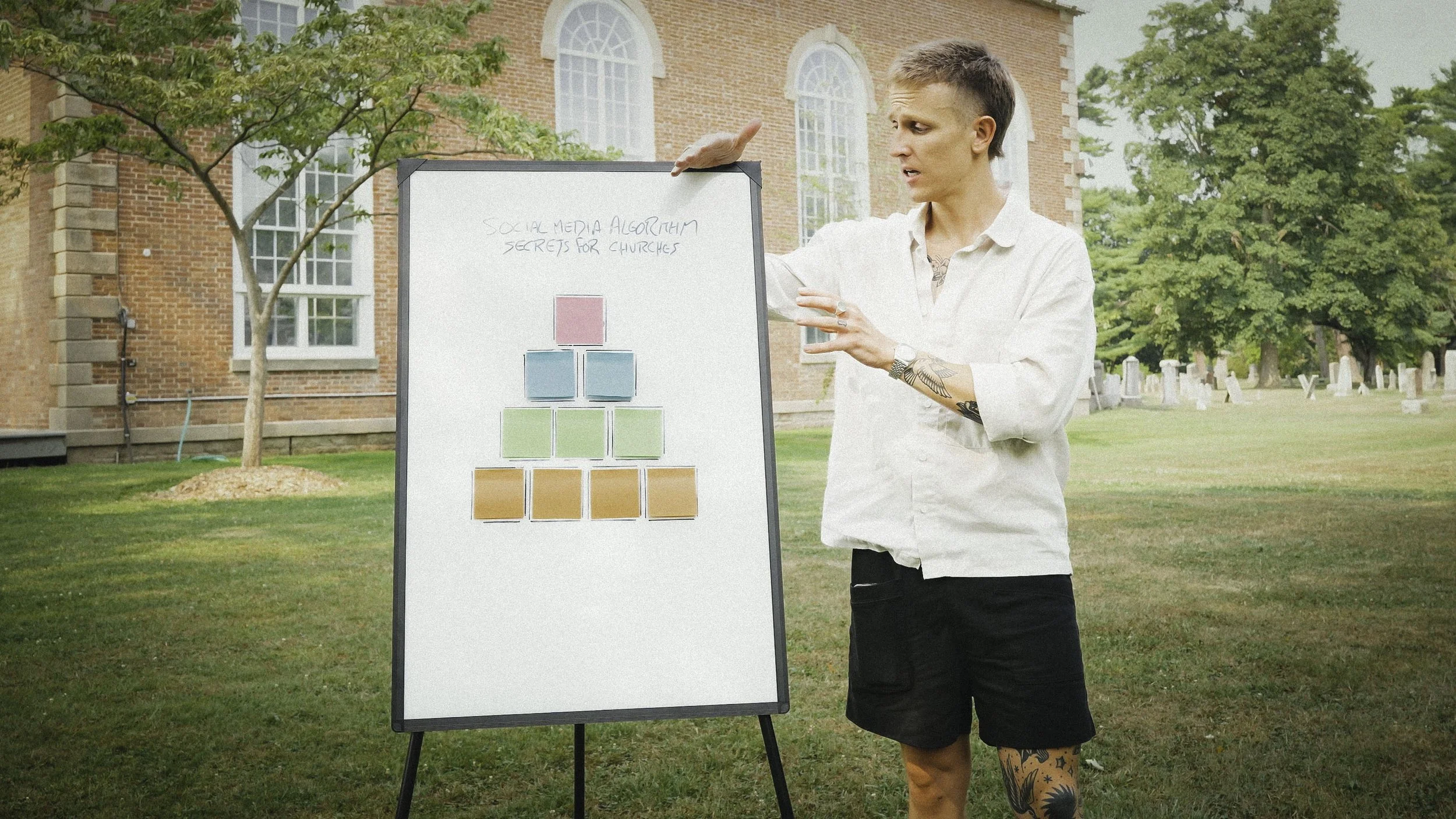Stop Saying "Link In Bio"! (Say This Instead)
The phrase “link in bio” is dead.
It hasn’t been working for a while now.
I want to show you what I've begun doing instead - because this new alternative has been working outrageously well so far.
Because here's the thing: Instagram is by far the number one social platform for churches right now.
Free Bonus: Viral Church Social Media List Post Template
Ready-to-go-template with bonus stock footage

Why Instagram is Key for Churches Today
It has a wide set of creative features: The Feed, Reels, Stories, and DMs.
It's big with Millennials and Gen Z.
Unlike its corporate counterpart, Facebook, using the platform as a creator is not agony.
And unlike TikTok (which is really its only competition), it's more established and perceived by many - rightly or wrongly - as more appropriate and friendly.
Where does YouTube fall into this comparison?
YouTube is not a traditional social media platform but it is social media.
Mainly because the definition of social media continues to expand - it's not just about friends and family connections any more.
It's also just plain ol' entertainment.
No one does that better than YouTube. YouTube is also the only social platform that every generation enjoys.
It's also the second-largest search engine in the world.
Nonetheless, it doesn't have the predictable discovery component that Instagram currently does.
What do I mean by that?
Sure, you can have a video pop off on YouTube and reach new audiences.
Just look at a recent video of ours on our podcast channel, The Pro Church Tools Show.
We did this interview with a former social media director at Transformation Church.
Our podcast YouTube channel is new to us. Less than a year old. And this is our biggest video by far on the channel to date.
As of writing this, we have close to seventeen thousand views, which you can see, according to YouTube, is 16.1K more than average.
And we got 329 new subscribers from just this video.
Which is about 13% of all subscribers on this channel currently.
Where did these viewers come from?
Well, if you look at overall impressions for this video, 93.9% of them came from YouTube, recommending our content mainly on the homepage.
Which translated to watch time on this video coming primarily from people not subscribed to the channel.
This is YouTube's discovery algorithm at work > Sharing our show with new people without us paying them to do it.
Which is awesome. However, Instagram's discovery algorithm is even more predictable.
How Instagram’s Discovery Algorithm Works:
Here's a church that DM'd me just the other day.
They had a post pop off and get more than 1.5 million views.
And more importantly, it more than doubled their follower count on Instagram in about 72 hours.
We followed up with this church a couple of weeks later, and they told us that that post is still getting views and attracting new followers to the church's profile today and that momentum on other posts has increased because of it.
It's all because of one great post.
And by the way, that post style is one we highlighted on a recent YouTube video, STEAL This Viral Church Social Media Post - and it comes with a downloadable template, too. Make sure to check that out.
Now, we'll get to the alternative for the "link in bio" call-to-action here in just a moment.
But you must understand the dynamics of Instagram right now to grasp why the "link in bio" invitation is not as effective as it once was.
Because Instagram really has it all right now.
You can connect with your existing congregation in a variety of creative formats.
You can reach new audiences that are local to your church because discovery algorithms have a substantial local component to how they distribute content.
You can do all this without spending a dime on boosted posts or ads, and you don't need an affluent pastor that people recognize to see growth.
There's really never been a better time to be doing social ministry.
The Golden Age of Social Ministry on Instagram
As users, I think we all long for the days of old on social - that's perfectly understandable.
For creators, this is the golden age. You don't want to squander it.
How do I know? Because I've been on Instagram for about ten years now.
I've been posting as a creator for roughly the same amount of time.
I lead a social media agency for churches that works every week with roughly 200 churches.
So we're in the trenches seeing this stuff.
But just look at my own account, which recently surpassed 100,000 followers.
If you're not following along over there, we'd love to have you @bradyshearer.
At the beginning of 2022, that account had 38,216 followers.
So, in just two years, the follower base tripled.
Why? The discovery algorithm of Instagram kicked in.
Today, your posts aren't just getting shown to your followers but to people not yet following your church.
That exposure in the era of traditional media would have cost thousands, even tens of thousands of dollars, for something like a billboard, TV or radio ad, or a print mailer.
I know because I started as a Media Director at a church plant in 2010, fifteen years ago.
And yes, I was tasked with creating a Facebook page for the church.
But social media was different then.
We didn't see it as a tool for reaching new people like we do today.
Even better? In the previous era of social media, once you hit publish on a post, you started an immediate countdown of about a day or two until that post faded into obscurity and was never seen again.
Today, a good post can still get views and attract new followers months after it was first posted, just like the church I showed you above.
Instagram just has one glaring weakness in my estimation: calls-to-Action.
The Challenge with Calls-to-Action on Instagram
Unlike Facebook and YouTube, you can't drop a link in a post caption.
Sure, we all have access to links on Instagram Stories, but have you checked the analytics on links in Stories compared to others?
Stories tend to get a fraction of the views once you insert a link.
Which leads us to the one link Instagram gives us.
The link in our bio.
This limitation has birthed some creative solutions over the years, like Linktree and similar platforms, which allow you to aggregate your most important links on a single page.
In essence, the experience looks like this:
In your post, you tell readers, "For more information, check my link in bio."
They then navigate to your profile
Click that one link in your bio
Land on your link aggregation page
Find the link that's relevant to them
Click it
And take their next step from there.
Here’s what mine looks like:
The process is far from elegant, but it has been our best option to this point.
Here's the problem - because it was our only option, this call-to-action has been beaten to death.
So much so that it rarely gets paid any notice anymore.
It's become synonymous with promotion. It's lost its novelty.
More often than not, it gets ignored because we've heard it many times.
So, we've begun using a different call-to-action.
Free Bonus: Viral Church Social Media List Post Template
Ready-to-go-template with bonus stock footage

A New Approach: Direct Message Automation
The new call to action is Direct Message Automation.
The tool I use to power this is Manychat - an official Meta Business Partner.
They have a free plan of up to 1,000 contacts.
And this is not a sponsored blog, nor do I have an affiliate code to share with you.
I don't know a person at this company who's requesting that we make this post in exchange for a free account or something like that.
I pay for a paid account with Manychat monthly with my own money.
But here's how it works:
I create a post for Instagram.
It can be for the feed, a Reel - whatever.
Then, I invite my audience to post a keyword in the comment section.
For example, “comment the word TEST below this post.”
Usually, I put that call-to-action in the post's caption, but I'll also put it in the post itself sometimes.
Then, I will set up an automation to send you a DM instantly to follow up.
If you want to see how this works right now, I have a post setup where you can test it - here's the post on my Instagram.
Comment “TEST” below this post and see what happens. 🤫 Hint: I’ll send you a free goodie.
DM automation is most effective when you’re giving your audience something of value.
But it can also work for links to event signups.
And I've been using this as the primary call to action in a ton of recent posts.
Just look at the numbers we're seeing. Check out the analytics on Instagram the first time I tried it- 2,036 comments.
Another one here - 1,408 comments.
Moreover, when you dive deeper into the analytics of these posts, the response looks even more impressive.
For example, the post with 2,036 comments reached 56,412 accounts overall (and if you look through the comment section, more than 95% of the comments are just the keyword of people requesting the social media template).
About a third of those accounts were not followers of mine.
Of those 56,000+ accounts, more than 2,000 commented in response to my invitation, which is about 3.5%.
That's very good.
Because for context, let's compare this to email.
How DM Automation Outperforms Traditional Methods
Email has long been considered the best way to contact people online.
People check their email regularly.
You don't have to compete with algorithms on email.
Historically, if you send an email, it will arrive in the intended inbox.
And if you're sending someone an email, it's because they've opted in to hear from you, so there's that implicit element of permission.
What kind of click-through rate is typical for email?
According to Mailchimp, about 2.66 percent.
And that's to a warm audience - meaning people that you've already made contact with and have joined your email list.
The DM automation here is outperforming the email clickthrough rate, with a third of that audience being cold, meaning they don't follow me.
Presumably, many of them have no idea who I am and have never interacted with my content, and this post is still outperforming an average email!
It gets better because everyone commenting on that post gets a DM from me, which is another positive signal to Instagram that people enjoy my content.
After all, the proof is not just in the feed; there's interaction beyond that in the DMs.
On top of that, you can't discount the social currency from a post with hundreds or even thousands of comments underneath it.
I'm not saying you should ditch email and only use DM automation on Instagram.
Not at all. I still love email. Newsletters are seeing a significant resurgence right now in the culture.
What I am saying is what has historically been Instagram's greatest weakness, is now one of its strengths - even when you compare it to one of the GOATs of digital media.
DM automation also works great on other posts- here's an example.
Here, on the sixth slide of the carousel, I was describing a concept that I couldn't really illustrate in the slide itself, so I invited people reading the post to comment the word 'EXAMPLE,' and I would DM them the example video I was referencing so they could see it for themselves.
That's the only time I mention it.
It's not in the caption. It's not in any of the other nine slides of the carousel. And it still resulted in more than 500 comments.
The best part? It all runs on autopilot.
I set this up before the post goes live and then it just runs itself.
So, I want to show you how I actually do that.
Free Bonus: Viral Church Social Media List Post Template
Ready-to-go-template with bonus stock footage

Implementing DM Automation: Practical Steps
Let's go into my Manychat account, and I'll show you exactly how I set this up for a new post.
Here’s a video to walk you through it quickly.
Conclusion: Embracing Change in Digital Marketing
There’s an old saying:
“Marketers ruin everything.”
Will DM automation be this effective forever?
No.
It’ll eventually lose its novelty and get stale, just like the overused “link in bio” prompt.
But that’s true of everything.
Remember? Marketers (that’s you and me) ruin EVERYTHING.
Until then, I plan on using DM automation more!
And I think your church should consider giving it a try as well.
Next Steps: Leveraging Viral Post Templates for Church Growth
As for the next blog you should read, I mentioned that church that saw their Instagram followers more than double in about 72 hours.
They used a very specific post template when they saw that happen.
I talk about that post format in this blog, and I even give you a free template to download so you can try it yourself.
We see this post format working for so many churches, so read that blog next.
And thanks as always for your time, attention, and trust. We'll talk soon.














